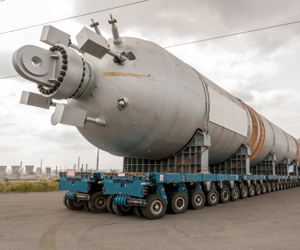Mild hydrocracking of LCO increases naphtha and distillate output while reducing unit operating costs
In a refinery, hydrocracking complements fluid catalytic cracking by taking on the more aromatic feedstocks that resist cracking, including FCC byproducts such as the light cycle oil (LCO) traditionally destined for high sulfur fuel oil (HSFO). Hydrocracking can also be configured downstream or in parallel with FCC operations to upgrade residual fractions, including LCO leveraging a variety of hydrocracking reactor configurations and catalysts, depending on the complexity of the upgrading tasks.

With global environmental mandates affecting fuel markets and accelerating the rollout of new fuel formulations (IMO 2020, USA Tier 3, China National 6, Euro VI, Bharat Stage [BS] VI, etc.), the hydrocracking of LCO is obviously of great interest in a bid to maximize the economic profit of a refinery and upgrade the utilization efficiency of crude feedstock resources.
LCO hydrocracking has recently been studied using various fractions of LCO and LCO blended with other refinery streams against Noble metals-based catalysts, such as platinum (Pt). Various operating conditions have been studied on the measurable outcomes, including the effect of pressure, temperature, space velocity, catalyst type (e.g., Pt), hydrogen-to-LCO molar ratio (H2/LCO), etc. For example, the effect of pressure (35 – 75 bar) has been studied on LCO hydrocracking on a Pt-based catalyst.
The targeted reaction indices of keen interest are the conversion of hydrocracking and hydrodesulfurization, along with the concentration and selectivity of naphtha and distillate fractions. Considering these indices, an important factor defining the quality of the process and catalyst employed in mild-to-moderate pressure LCO hydrocracking is the catalysts’ ability to remain stable (after some initial amount of catalyst deactivation), while increasing naphtha and distillate output.
A niche market has developed for mild hydrocracking of LCO by converting it to a more profitable ULSD (10 ppm sulfur or less), contributing significantly to a refinery’s overall economic return. Hydrocracking units specifically designed for efficiently upgrading LCO to diesel down to 10 ppm sulfur began entering the market over a decade ago, such as with at least five DuPont IsoTherming® units currently configured for mild hydrocracking of 100% low-value LCO feed to high-margins ULSD.
The liquid-full IsoTherming reactor system and the use of liquid recycle limits the temperature rise across the reactor to minimize undesirable side reactions. The process also recovers the significant heat release associated with LCO aromatic saturation and recycles this energy to the feed, thereby minimizing feed heater fuel gas requirements and reducing unit operating costs. The first IsoTherming unit was designed specifically for treating 100% LCO and a feed sulfur content of over 4100 wppm. The single reactor consisted of three reaction zones and a catalyst scheme designed for severe distillate hydrotreating and mild hydrocracking. Information available from DuPont Clean Technologies noted this unit has consistently delivered sulfur conversion levels of 99% since its 2011 startup, with a typical range of 5 to 20 wppm.







Leave a Reply
You must be logged in to post a comment.